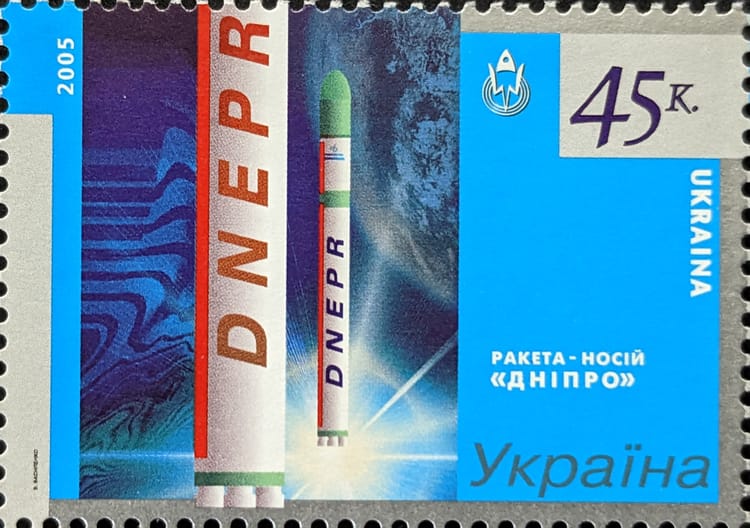AAC Clyde, Planet, and Cubesat Manufacturing
AAC Clyde Space released its 2019 Annual Report last week. The information within the report gives a peek at the priorities the cubesat manufacturing company is pursuing. One company goal is for it to become the “... most admired company in the small satellite sector...” To do this, the company notes in the report it will need to (page 7):
- increase manufacturing capacity
- establish U.S. manufacturing
- win orders of 10 satellites
- develop a standard/integrated bus
- develop satellite as a service
Maybe Clyde needs to increase manufacturing capacity, especially to build “orders of the next magnitude”--10 satellites. It might even make sense for the company to manufacture satellites in the United States if only to be more accessible and visible to U.S. customers. It doesn’t appear that Clyde, a dedicated cubesat manufacturer, is building many cubesats, however. Especially when compared with satellite manufacturers who only manufacture satellites for themselves.
Different Businesses, Different Cubesat Output
When cubesats started becoming more mainstream, several different startups sprung up five years ago (or so) concerning the manufacturing and use of cubesats. Some startups, like Clyde Space (now AAC Clyde), focused on cubesat and component manufacturing. Others, such as Planet Labs (Planet), developed and manufactured their own cubesats to deliver the companies’ various products (in Planet's case, imagery).
To be very clear, these companies, Planet and Clyde, aren’t in the same business even though both involve cubesats. Clyde’s business is about building cubesats, supplying small satellite components, and services. Planet is focused on providing Earth observation imagery products. Both build cubesats. Both are associated with the “new space” appellation.
What might be considered odd, however, is that Planet is manufacturing and deploying significantly more cubesats than Clyde. As of nearly a year ago, Planet had deployed over 350 satellites (although the company will note around 150 are operational). There’s nothing special about these 3U cubesats other than they are dedicated to Planet’s imagery mission.
Clyde, on the other hand, appears to be deploying fewer cubesats annually than Planet--significantly fewer. In the company’s latest annual report, one of its strategic goals is (page 7):
Winning constellation orders of the next magnitude, approximately 10 satellites. This is a natural development for several of AAC Clyde Space's customers who have now completed demonstration phases with satellites in orbits. Next step is to move on to operational constellations.
The next magnitude of cubesat orders is 10? That seems to be a very humble goal. In theory, Clyde should be manufacturing more cubesats than Planet annually. The cubesat platform it is using for the basis of its satellites is flexible enough to allow for all sorts of missions and should be inexpensive enough to expand the range of possible customers. Clyde knows this and states it near the beginning of its report (page 5):
The type of satellites and subsystems that AAC Clyde Space provides are ideally suited to support the need for more and better tools to monitor Earth. Our satellites can help governments and commercial companies understand the impact of their actions. In turn, industries such oil & gas, transportation, agriculture, etc. can use the data from such satellites to demonstrate how they are reducing their environmental footprint, something that is increasingly demanded by consumers the world over.There is a clear and present need for the small satellite industry to take the lead in helping the world face the environmental changes that are upon us. AAC Clyde Space is supplying governmental and non-governmental organisations the increasing amounts of satellites and data that are required to face such changes. And as a commercial organisation, we know that the private space sector is developing a range of new value add services focused on the environment, that will need satellites and Space-as-a-Service solutions. We are the partner of choice for such solutions and are actively working on the next generation of technology and on the business models to address them.
Similar Offerings, Confusing Messaging
These statements also highlight why Clyde may be facing some headwinds with its products and services. At the end of the first sentence: support the need for more and better tools to monitor Earth. This is what Planet is offering already, in a way. From Planet’s “About” page: Our mission is to image the entire Earth every day and make global change visible, accessible, and actionable. It just so happens that governments and commercial companies, if they want to monitor the Earth, just might forego operating a constellation, or get in the process of designing a satellite--unless there’s something very specific not offered by Planet, DigitalGlobe, etc.
However, and this could explain why Planet is manufacturing and deploying more cubesats than Clyde, there are probably more customers out there who just want or can only afford Planet’s data product. Planet also had a baseline number of satellites for its constellation in mind as well--at least 150 Dove satellites. The company knew it needed to develop an assembly process for its satellites to be able to quickly and relatively inexpensively, build at least 150 satellites. And Planet is only building one type of cubesat--3U--making manufacturing much simpler for the company.
It may say something about cubesat pricing from standalone manufacturers like Clyde that Planet chose to manufacture its own Earth observation satellites instead. Consider what Planet had to do to establish its factory floor. The company had to find space (in this case, in San Francisco). It had to get the equipment to manufacture its satellites. It did all this (and quite a few other things) rather than pay someone else to build its satellites.
It may also be, though, that the cubesat form factor is generally easier to work with, as well as less expensive to build. But since the company does have a manufacturing floor, there’s another option: Planet decides to offer its cubesat manufacturing capacity to customers. This would give Planet a leg up on Clyde. Planet might be able to undercut Clyde’s EO cubesat offerings because Planet has it’s own primary business it can fall back on (as we’ve seen companies like Google do with its free software applications).
Clyde does provide other types of cubesats, but EO seems to be one of its key pillars when it talks about its sales strategy (page 9):
Earth observation data is used in many applications, monitoring assets such as trucks, cars, and ships, forestry and farmland. Earth observation is also used in meteorology, environmental and scientific research, not least environmental related data. Security includes military applications but also encrypted transmission of sensitive information such as money transfers and health information.
There are many EO-dedicated operators in the field, or coming online very shortly. Most of them, like Planet, offer not just imagery, but a suite of services surrounding imagery including analysis. It’s puzzling that Clyde would choose this area as one of its sales drivers. Also puzzling is its “satellite as a service” offering.
Clyde is a hardware company, building satellites, and satellite components. It wants to be admired and is stepping into a realm of service and data. That is a realm in which other hardware-focused technology companies, such as Apple, have historically fumbled. But this doesn’t mean Clyde will fumble it. At the same time, the number of customers the company is attracting doesn’t seem to be resulting in great numbers of Clyde-manufactured cubesats orbiting the Earth, meaning the company might have a tough road ahead, even after it’s constructed an American manufacturing plant.
This is not to say that Clyde is in trouble. The company seemed quite optimistic in its annual report. It seems to be making progress with its 6U cubesat and is capably providing parts to other cubesat operators and manufacturers. It also appears to be approaching data services from the other side. It may not be a specific imagery provider like Planet, but it can also go further afield in the services it might be able to provide, under its “Satellites as a Service” offering. But it may also be more complicated and less appealing to customers looking for a simple product.
And why Planet will likely continue manufacturing more cubesats annually.




Comments ()